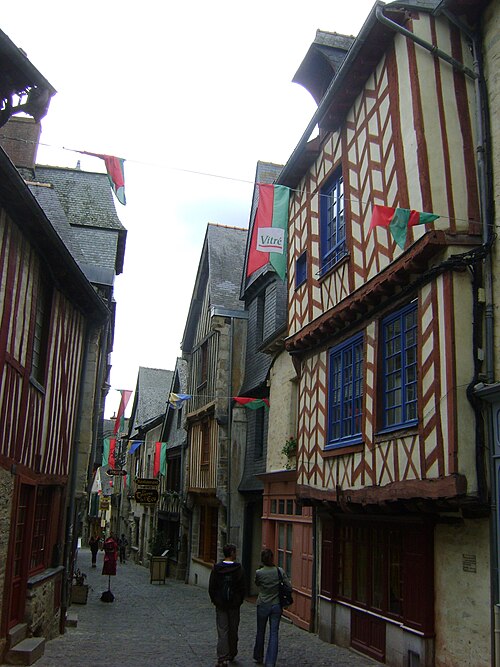Fire in Historic Center in Bretagne (France)
A significant fire broke out in a small apartment building on Rue des Augustins in the historic center of Vitré (département d’Ille-et-Vilaine (région Bretagne) on Sunday, October 12, 2025, in the early evening, impacting a four-unit residential structure and prompting a major emergency response.
The fire apparently started on the first floor of the building. As of the latest reports, the precise technical cause of ignition had not been officially released. There is no confirmed mention of a short circuit, kitchen fire, or intentional action in available sources as of October 14, 2025.
Building Construction and Fire Behavior
The affected building is described as an ‘ancien immeuble’ (historic or old building), consisting of four apartments over several floors, with habitable loft space (‘combles aménagés’).
The fire spread from the first floor to the roof space (loft or attic), a path often associated with older structures due to the lack of fire-stopping between floors and the presence of combustible structural materials (old timber, wooden staircases, and roof framing).
Significant smoke development was reported, filling much of the street and hampering vacuation efforts.
These factors indicate a typical vulnerability of historic buildings: open connections between floors and attic, absence of modern fire compartmentalization, and highly flammable wooden elements, resulting in rapid vertical fire spread and substantial property damage (at least three apartments rendered uninhabitable).
Rescue and Firefighting Operations
The initial alert was raised around 19:30 local time. Passersby were seen attempting to assist residents before the fire brigade’s arrival, including trying to access the first floor with ladders.
Upon arrival, firefighters conducted evacuations and medical triage: four people were evacuated from the building.
Two individuals suffered burns and/or smoke inhalation injuries and were treated by emergency medical teams. The other two residents were uninjured.
A large-scale operation was deployed: 42 firefighters and six officers, using significant resources to control the fire and prevent further spread. Firefighting continued for several hours—the operation was still ongoing as of 21:00 that night.
Crowd and scene management were also part of the emergency efforts, as people gathered outside and in the street during and after the incident.
Vitré, there is no evidence that the fire spread to adjacent or neighboring buildings. Sources detailing this fire and others involving historic structures in the region consistently emphasize the effectiveness of rapid intervention by the local fire brigade in containing such incidents.
In this case, emergency services arrived quickly, focused their resources on confining the blaze within the affected structure, and succeeded in preventing lateral (horizontal) fire spread beyond the initial building envelope. The fire did progress vertically through the building due to the combustible construction and open attic space, but there were no reports of fire ignition or significant heat damage to surrounding buildings.
This outcome is typical when:
- The intervention time is short and resources are adequate
- Historic urban fabric lacks continuous exposed combustible elements between adjacent structures
- Thermal radiation, flying brands, or window-to-window spread is minimized by street width and firefighting tactics
Notably, in similar recent historic fires, firefighters’ decisive and immediate action has been key to protecting neighboring historic and residential structures from escalation or chain-reaction fire hazards.
Summary
The Vitré fire exemplifies the heightened risks associated with ohistoric centers lacking modern fire barriers. Rapid vertical fire spread and difficult evacuation conditions characterized the event.
Prompt and large-scale intervention by emergency services—including the rescue of all occupants—prevented fatalities, though several apartments have been rendered uninhabitable and at least two residents required medical attention for injuries.





